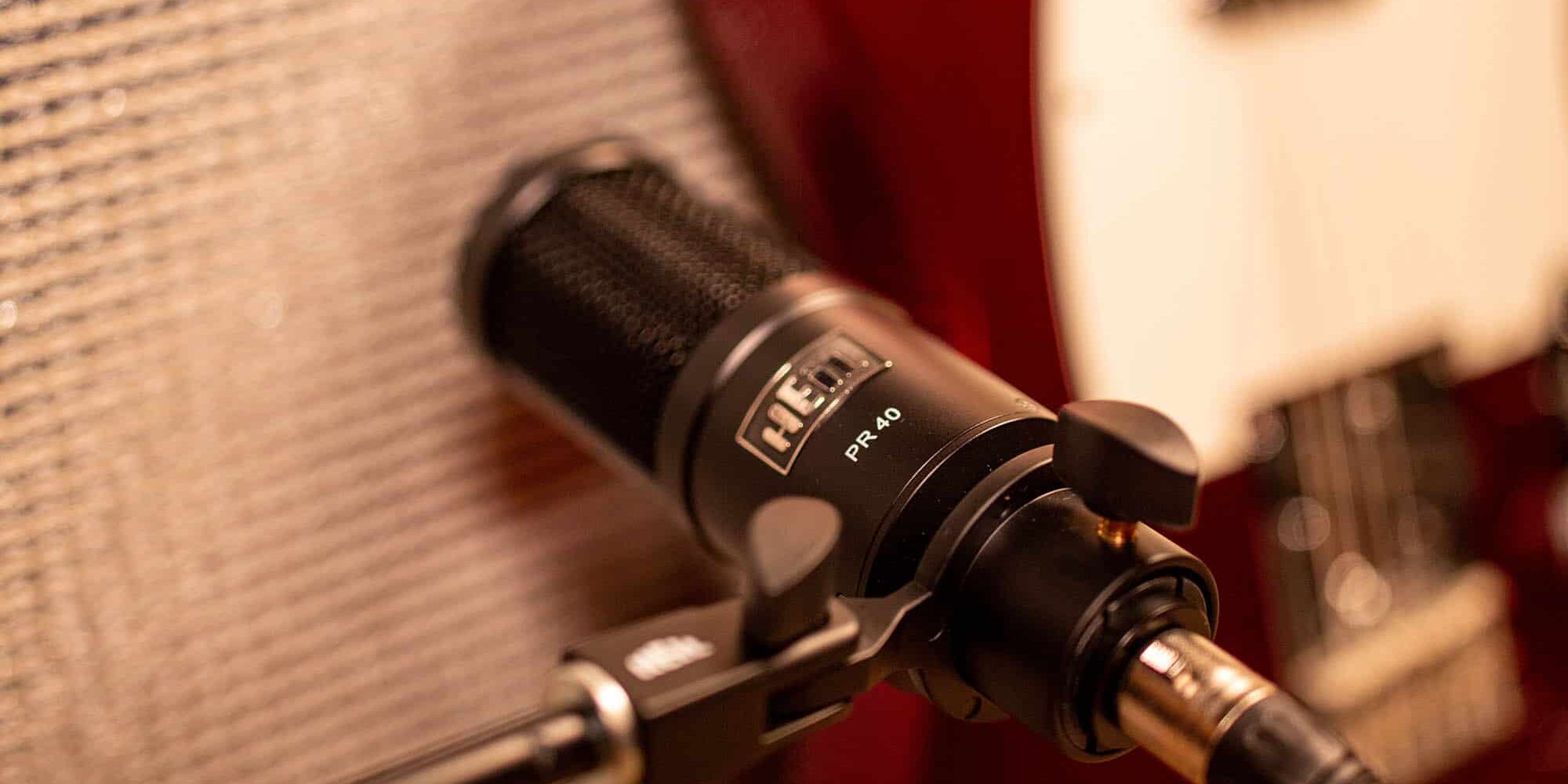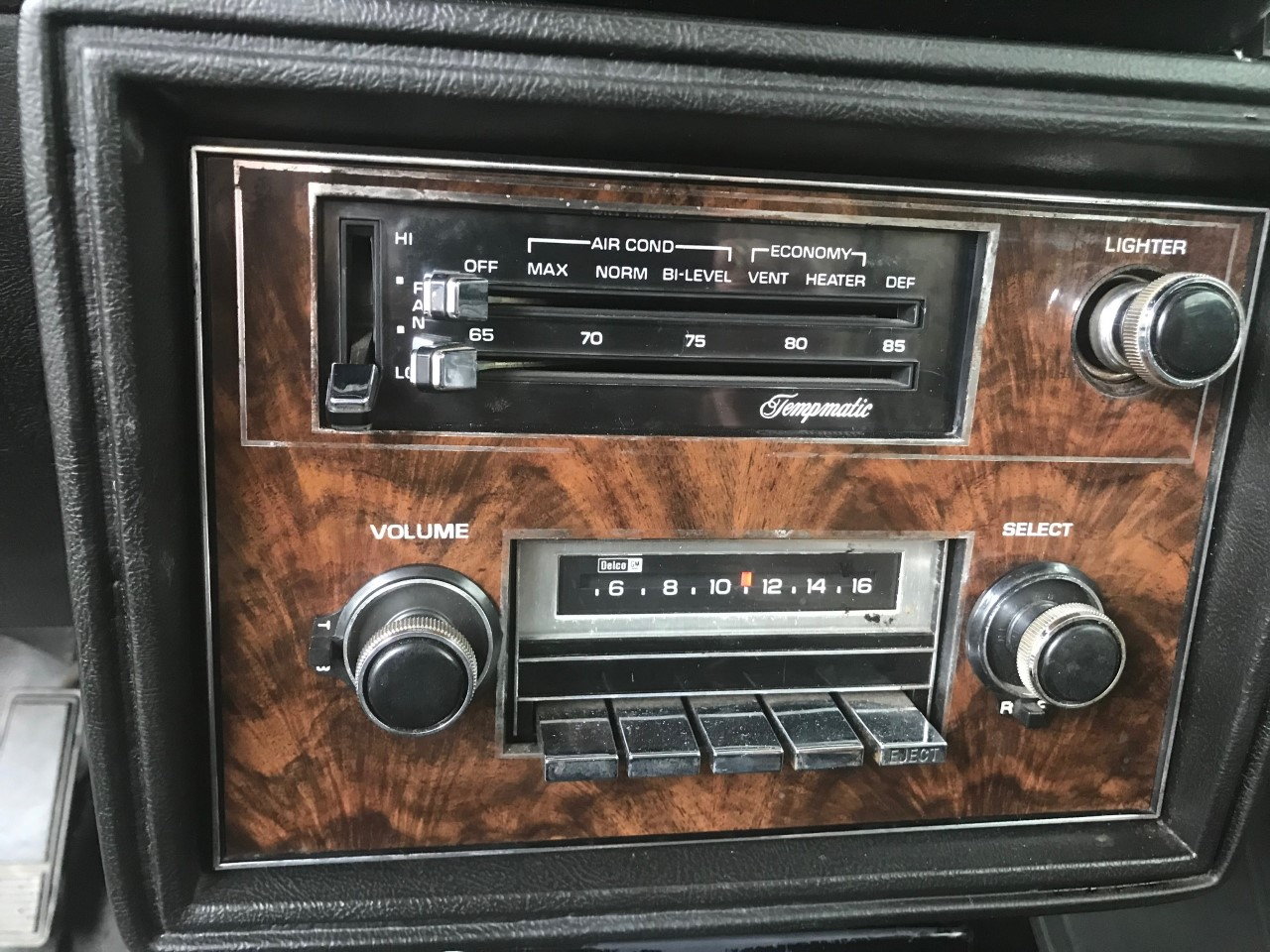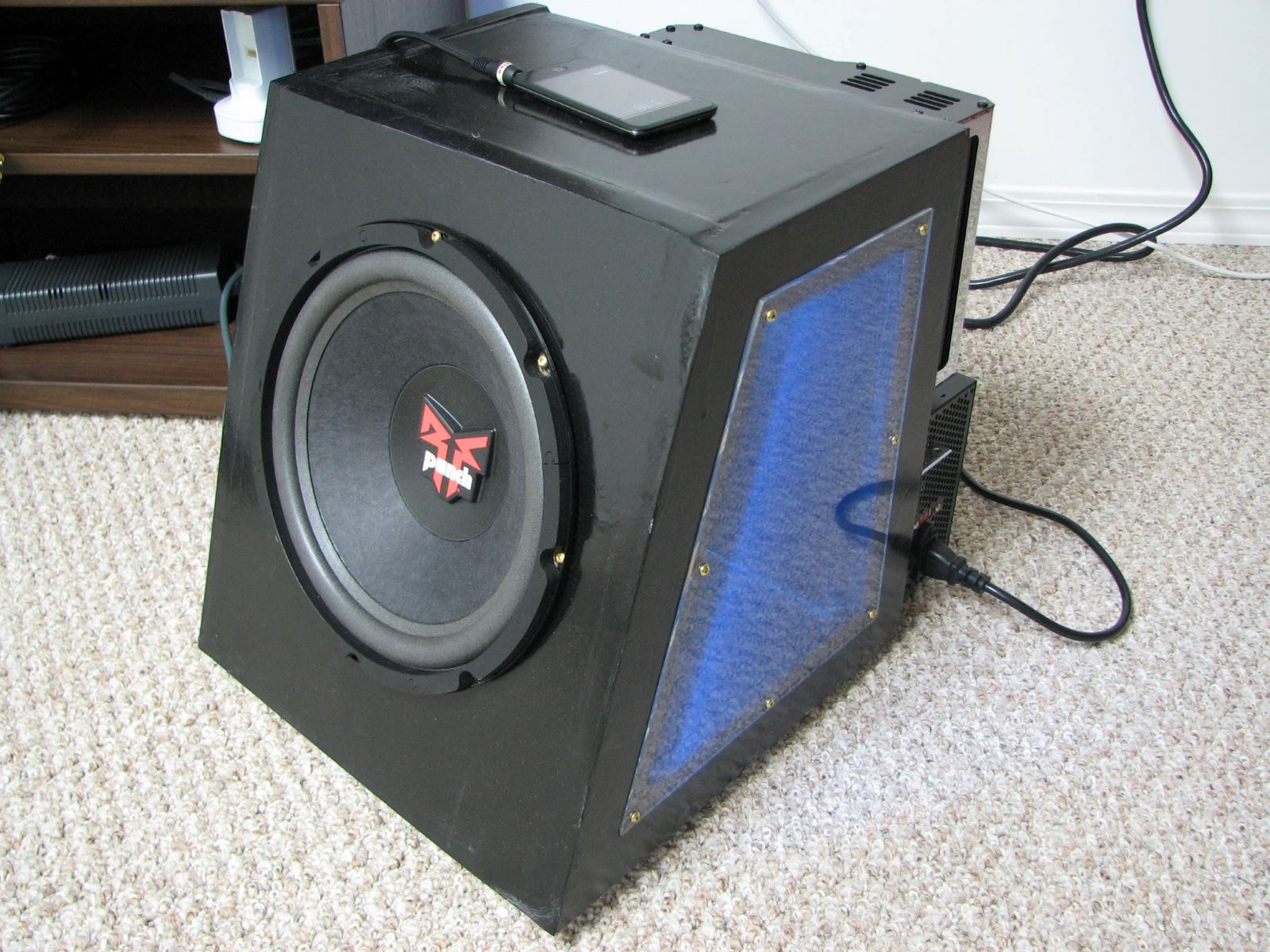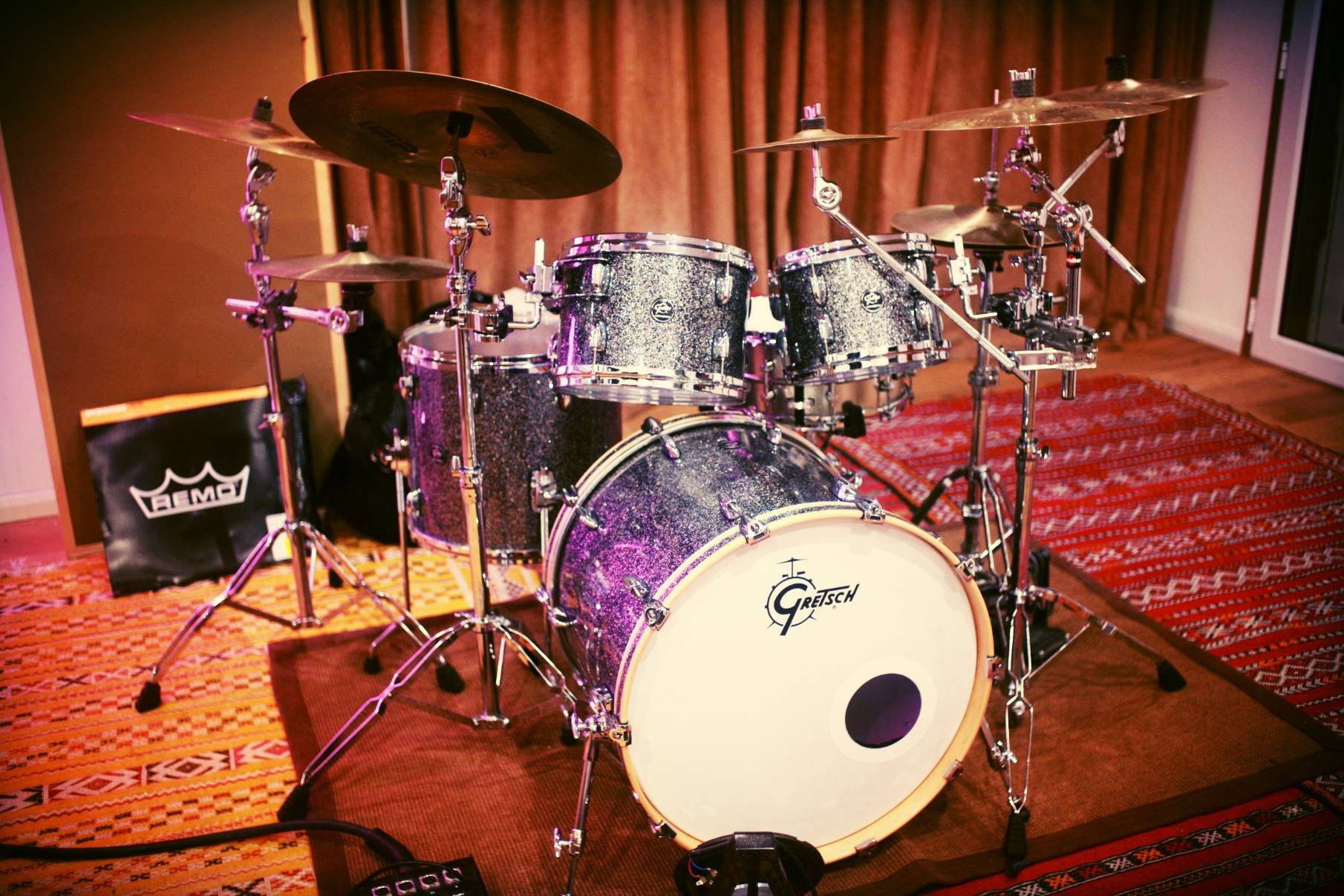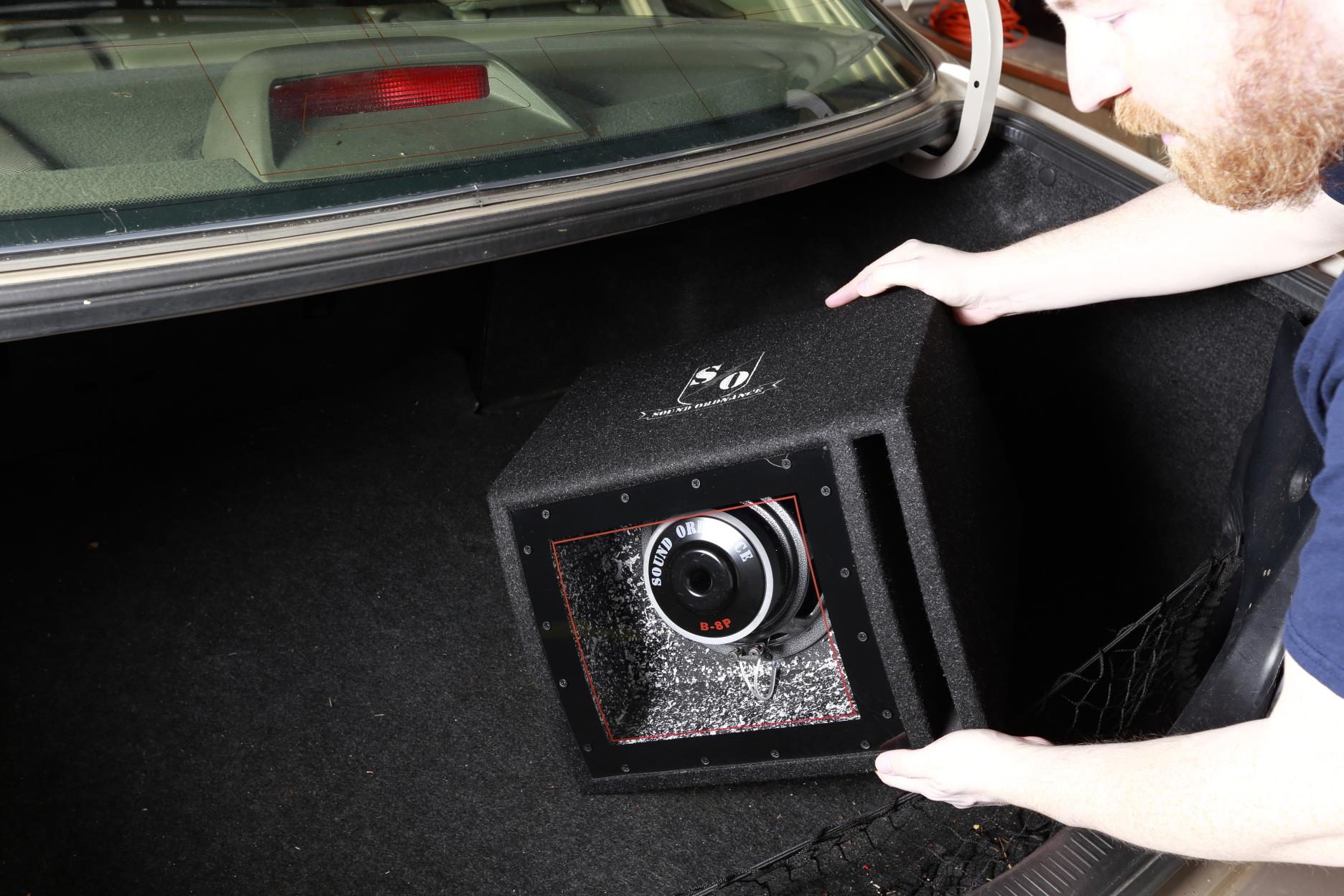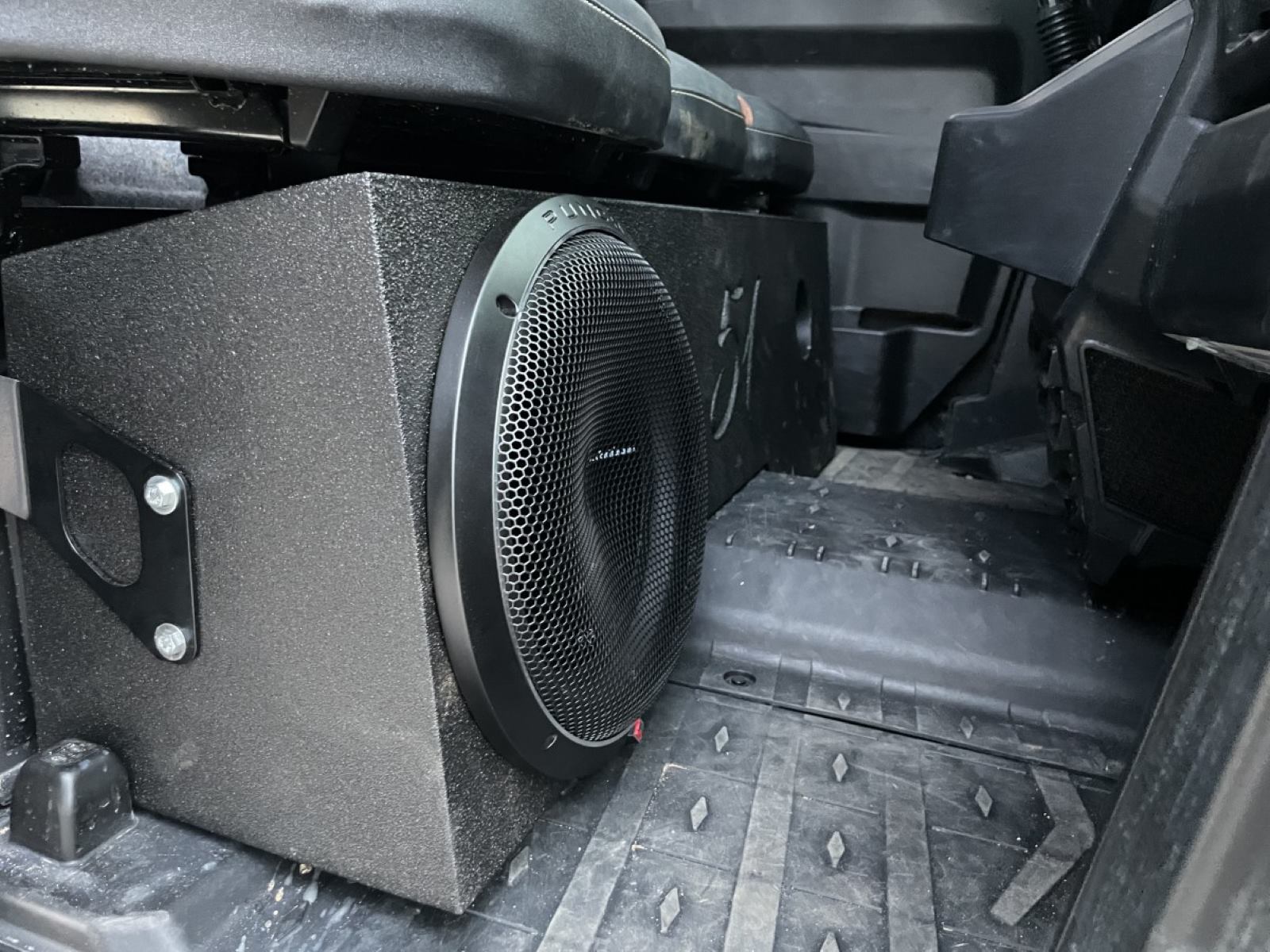Home>Devices & Equipment>Subwoofer>How To Stop Vibration From Subwoofer In Car


Subwoofer
How To Stop Vibration From Subwoofer In Car
Modified: February 18, 2024
Learn how to eliminate subwoofer vibration in your car with these effective tips and tricks. Prevent annoying rattling and enjoy high-quality sound without any disturbance.
(Many of the links in this article redirect to a specific reviewed product. Your purchase of these products through affiliate links helps to generate commission for AudioLover.com, at no extra cost. Learn more)
Table of Contents
Introduction
Are you tired of that annoying vibration in your car caused by the subwoofer? Many car enthusiasts love the powerful bass provided by subwoofers, but the accompanying vibration can be a real nuisance. Not only can it be distracting and uncomfortable, but it can also negatively impact the overall audio experience.
In this article, we will explore various techniques to help you stop the vibration from your subwoofer in your car. By understanding the causes of vibration, identifying problem areas, and implementing sound dampening techniques, you can achieve a smooth and enjoyable audio experience without the unwanted rattling and shaking.
Whether you are an audiophile looking for the perfect audio setup or simply want to enjoy your favorite music while driving, finding a solution to subwoofer vibration is essential. With a combination of proper installation, adjustment, and soundproofing methods, you can minimize or eliminate the vibrations, allowing for a more pleasant and immersive audio experience.
So, let’s dive into the world of subwoofers and find out how you can put an end to the vibrations in your car!
Understanding the Causes of Vibration
Before we can effectively address the issue of subwoofer vibration in your car, it is important to understand the underlying causes. Vibration is typically a result of the powerful low-frequency sound waves produced by the subwoofer. These sound waves can cause the car’s structure and nearby objects to vibrate, creating unwanted noise and discomfort.
One common cause of subwoofer vibration is improper installation. If the subwoofer is not securely mounted or if there are loose connections, it can rattle and vibrate against the surrounding surfaces. Additionally, the vehicle’s interior can act as a resonance chamber, amplifying the vibrations caused by the subwoofer.
The size and power of the subwoofer can also contribute to vibration. Larger subwoofers or those with higher power ratings tend to generate more force, resulting in increased vibration. The materials used in the construction of the subwoofer, such as the cone and surround, can also impact the level of vibration produced.
Furthermore, speaker placement plays a crucial role in the amount of vibration experienced. Placing the subwoofer in an enclosed area or near rattling objects can amplify the vibrations and make them more noticeable.
By understanding these causes, you can begin to identify the problem areas and take steps to address them. In the next sections, we will explore various techniques to help you reduce subwoofer vibration in your car.
Identifying the Problem Areas
Before you can effectively tackle the issue of subwoofer vibration in your car, it is crucial to identify the problem areas. This will help you pinpoint the sources of vibration and take targeted measures to alleviate them.
Start by conducting a thorough inspection of your car’s interior. Pay close attention to areas where vibration is prominent or where components may be loose. Common problem areas include the dashboard, door panels, and rear deck. Check for any loose screws, fasteners, or trim pieces that may contribute to vibrations.
Next, listen carefully to the audio coming from your subwoofer. Notice if the vibration is present during specific frequencies or if it occurs consistently. This can help you determine if the issue lies with the subwoofer itself or if it is related to installation or configuration.
If you notice that the vibration is particularly strong in certain areas of the car, consider checking the mounting of the subwoofer. Ensure that it is securely fastened and that there is no movement or rattling. Additionally, inspect the wiring connections to ensure they are tight and properly connected.
Take note of any objects or materials that may be coming into contact with the subwoofer or causing resonance. Items such as loose wires, nearby panels, or even personal belongings can contribute to vibrations. Clearing the area around the subwoofer and ensuring there is adequate space for sound dispersion can help alleviate the problem.
It is also worth considering the overall condition of your car. Older vehicles or those with worn suspension components may transfer more vibration from the subwoofer into the cabin. If you suspect this might be the case, it may be necessary to address any mechanical issues in order to achieve a smoother audio experience.
By identifying the problem areas and potential sources of vibration, you will be better equipped to address the issues and implement the necessary solutions. In the next sections, we will explore techniques to minimize subwoofer vibrations and enhance your car audio setup.
Assessing Subwoofer Installation
Proper installation of your subwoofer is crucial when it comes to minimizing vibrations. Assessing the installation can help identify any issues that may be contributing to unwanted shaking or rattling in your car.
Start by checking the mounting of the subwoofer. Ensure that it is securely fastened and tightly secured to the vehicle’s structure. Loose or unstable mounting can lead to vibrations and rattling. Consider using high-quality mounting brackets or enclosure systems designed specifically for your make and model of vehicle.
Next, inspect the wiring connections. Loose or poorly connected wires can cause interference and increase vibrations. Make sure all connections are secure and properly insulated to minimize electrical noise and unnecessary movement.
Consider the location of the subwoofer within your vehicle. Placing it in an area with ample support can help reduce vibrations. Avoid mounting the subwoofer near panels or objects that can rattle when the bass hits. If necessary, you can add bracing or reinforcement to those areas to prevent vibrations from transferring into the cabin.
Additionally, consider the positioning of the subwoofer. Experiment with different placements to find a configuration that minimizes vibrations. Sometimes, minor adjustments in location can make a significant difference in reducing unwanted resonance. Keep in mind that the size and shape of your vehicle may influence the optimal positioning.
If you have a custom-built enclosure for your subwoofer, ensure that it is properly designed and constructed. A well-designed enclosure can help control the vibrations and optimize the sound output. Consider using materials that are capable of absorbing and dampening vibrations to minimize their transmission to the surrounding areas.
Don’t forget to check the alignment of the subwoofer. If it is slightly misaligned, it can cause vibrations and rattling. Take the time to properly align the subwoofer in its enclosure or mounting location to ensure optimal performance.
By thoroughly assessing the installation of your subwoofer and making any necessary adjustments, you can significantly reduce vibrations and enhance the overall audio experience in your car. In the next sections, we will explore additional techniques to further minimize subwoofer vibrations.
Adjusting Subwoofer Settings
Once you have assessed the installation of your subwoofer, it is time to fine-tune its settings to minimize vibrations and enhance audio performance. Properly adjusting the subwoofer settings can make a significant difference in the overall sound quality and vibration levels.
Start by adjusting the crossover frequency. The crossover frequency determines the point at which the subwoofer takes over the low-frequency reproduction. By setting the crossover frequency appropriately, you can ensure that the subwoofer is only producing the frequencies it is designed to handle, minimizing distortion and vibrations. Experiment with different settings to find the balance that works best for your audio preferences.
Next, consider adjusting the gain or volume control of the subwoofer. The gain control determines the intensity of the subwoofer’s output. Setting it too high can result in excessive vibrations and overpowering bass. On the other hand, setting it too low may lead to a lack of impact. Find the right balance that delivers the desired bass level without causing excessive vibrations.
Take advantage of any onboard equalizers or bass boost features that your subwoofer may have. These settings allow you to fine-tune the audio response and tailor the bass output to your liking. However, be cautious not to push the settings to the extreme, as it may lead to increased vibration and distortion.
Consider utilizing a sound meter or audio calibration system to ensure that the subwoofer and other speakers are balanced. Properly calibrating the audio system can help distribute the sound evenly, reducing the need for excessive bass boost and minimizing vibrations.
It is also worth exploring the phase settings of the subwoofer. By adjusting the phase, you can align the subwoofer’s sound waves with those of the other speakers in the car. This synchronization can help minimize phase cancellations and vibrations caused by conflicting sound waves.
Throughout the adjustment process, take the time to listen carefully to the audio output. Pay attention to any vibrations or resonances that may occur at different frequencies or volume levels. Fine-tune the settings accordingly to achieve a balanced and immersive audio experience.
By carefully adjusting the subwoofer settings, you can optimize the audio performance while minimizing vibrations and unwanted resonance. In the next sections, we will explore additional techniques to further reduce subwoofer vibrations in your car audio system.
Implementing Sound Dampening Techniques
To further reduce subwoofer vibrations in your car, it is essential to implement sound dampening techniques. These techniques aim to minimize the transmission of vibrations from the subwoofer to the surrounding areas, resulting in a smoother and more enjoyable audio experience.
One effective method is to install sound deadening materials in your car’s interior. These materials are designed to absorb and dampen vibrations, reducing their impact on the surrounding surfaces. Common sound deadening materials include butyl rubber sheets, acoustic foam, mass-loaded vinyl, and vibration-dampening mats.
Focus on applying sound deadening materials in areas that are prone to vibrations, such as the doors, floor, and trunk. For example, apply the material on the inner door panels and the metal sheet under the carpet to reduce vibrations caused by the subwoofer. Be meticulous in your application, ensuring that the materials cover as much surface area as possible for optimal vibration reduction.
Consider using foam gaskets or sealants to create a tight seal between components and panels. These gaskets can help prevent rattling and minimize the transfer of vibrations to adjacent panels. Pay particular attention to areas where components come into contact with each other, such as the mounting points of the subwoofer or speakers.
If you have a custom-built subwoofer enclosure, consider adding internal bracing. By reinforcing the enclosure’s structure, you can minimize panel vibrations and improve the overall rigidity. This can result in cleaner bass reproduction and reduced vibrations.
Another technique to reduce vibrations is to add insulation to the vehicle’s interior. Insulation materials such as foam or specialized acoustic liners can help reduce external noises and vibrations, creating a quieter environment for your audio system. Install the insulation in areas around the subwoofer and in other resonating panels to minimize vibrations.
Lastly, consider using barrier materials to block the transmission of vibrations. These materials, such as mass-loaded vinyl or specialized barrier mats, act as a barrier between the subwoofer and the surrounding surfaces. They help contain the vibrations within the subwoofer enclosure, reducing the transfer of energy to the rest of the car’s interior.
By implementing sound dampening techniques, you can significantly reduce subwoofer vibrations in your car. These techniques not only enhance the audio experience but also contribute to a quieter and more comfortable ride. In the next sections, we will explore additional methods to minimize vibrations by balancing speaker placement and utilizing isolation materials.
Balancing Speaker Placement
The placement of speakers, including the subwoofer, plays a critical role in minimizing vibrations and achieving a well-balanced audio system. By strategically positioning the speakers in your car, you can optimize sound distribution and reduce the resonance caused by the subwoofer.
Consider the positioning of the subwoofer in relation to the other speakers in your car. Placing the subwoofer too close to the front or rear speakers can result in interference and an uneven soundstage. Aim for a balanced arrangement where the subwoofer seamlessly integrates with the other speakers, providing a cohesive and natural sound experience.
Experiment with different locations for the subwoofer to find the optimal placement. It is generally recommended to place the subwoofer near the rear of the car or in the trunk, as this can help distribute the bass evenly throughout the vehicle. Avoid placing the subwoofer directly against a panel or wall, as this can amplify vibrations.
Consider angling the subwoofer slightly towards the center of the car. This positioning can help minimize vibrations that may be caused by the subwoofer directly facing a panel. Experiment with different angles to find the sweet spot that offers the best balance between sound quality and vibration reduction.
In addition to subwoofer placement, pay attention to the placement of other speakers as well. Properly positioning the front, rear, and side speakers can help create an immersive sound experience while minimizing the reliance on the subwoofer for producing bass frequencies.
Take into account the car’s interior and its unique acoustic properties when positioning the speakers. Some vehicles may have natural sound reflection points or resonances that can be minimized by adjusting the speaker locations. Experiment with speaker placement to find the balance that provides the most accurate and pleasing sound reproduction.
It is also important to consider the distance between the subwoofer and the listeners. Placing the listeners too close to the subwoofer can result in an overpowering bass and increased vibrations. Try to maintain a balanced distance where the bass is perceptible but not overwhelming.
By carefully positioning the speakers in your car, including the subwoofer, you can create a more balanced soundstage while minimizing vibrations. Experiment with different speaker placements and angles to find the configuration that offers the best audio performance for your specific vehicle and preferences.
In the next sections, we will explore the utilization of isolation materials and enhancing the subwoofer enclosure to further reduce vibrations and enhance the overall audio experience in your car.
Utilizing Isolation Materials
Utilizing isolation materials is an effective method to further reduce subwoofer vibrations in your car audio system. These materials help isolate the subwoofer and minimize the transfer of vibrations to the surrounding surfaces.
One commonly used isolation material is foam. Foam pads or isolation feet placed underneath the subwoofer can absorb vibrations and prevent them from being transmitted to the car’s interior. Additionally, foam gaskets or tapes applied between the subwoofer and its mounting surface can create a cushioning effect, reducing the contact between the subwoofer and the mounting surface.
Another option is neoprene rubber. Neoprene bushings or isolation mounts can be placed between the subwoofer and its mounting brackets or enclosure. These rubber components act as shock absorbers, effectively isolating the subwoofer from the surrounding structure and minimizing vibrations.
If your subwoofer is enclosed in a box, consider using specialized isolation materials designed specifically for speaker enclosures. These materials, such as acoustic foam or rubber isolation pads, can be added to the interior surfaces of the enclosure. They help absorb vibrations generated by the subwoofer, preventing them from resonating and causing rattling noises.
When selecting isolation materials, ensure that they are compatible with the weight and size of your subwoofer. Opt for high-quality materials that are designed for vibration isolation, as they will provide the best results in reducing vibrations.
Additionally, consider utilizing isolation materials for other components in your car audio system. Isolating amplifiers, crossovers, and speaker brackets from vibrating surfaces can help further reduce unwanted resonance and vibrations.
It is important to note that while isolation materials can significantly reduce vibrations, they may also impact the overall sound output. Some materials may absorb or dampen the low-frequency energy produced by the subwoofer. Therefore, it is crucial to find a balance between vibration isolation and maintaining the desired bass response.
By using isolation materials, you can effectively minimize subwoofer vibrations and create a more controlled and enjoyable audio experience in your car. These materials help isolate the subwoofer from the car’s structure and reduce the transmission of vibrations to the surrounding surfaces.
In the next section, we will explore techniques for enhancing the subwoofer enclosure to further reduce vibrations and improve the overall audio performance in your car.
Enhancing Subwoofer Enclosure
The subwoofer enclosure plays a crucial role in minimizing vibrations and optimizing the performance of your subwoofer. Enhancing the subwoofer enclosure can help reduce resonance, improve bass response, and ultimately minimize unwanted vibrations in your car audio system.
One important consideration is the type of enclosure you are using. Different enclosure designs, such as sealed, ported, or bandpass enclosures, have different characteristics and affect the way the subwoofer produces sound. A properly designed and constructed subwoofer enclosure can help control vibrations and enhance the overall audio performance.
If you have a pre-fabricated enclosure, consider reinforcing it with internal bracing. Adding sturdy cross supports or mounting baffles within the enclosure can improve its rigidity and reduce panel vibrations. This helps ensure that the energy produced by the subwoofer is focused on creating sound rather than causing unwanted resonance.
Additionally, you can use damping materials within the enclosure to further control vibrations. Acoustic foam or specialized damping sheets can be applied to the internal surfaces of the enclosure. These materials absorb vibrations and prevent them from resonating within the enclosure, resulting in cleaner and more defined bass output.
Pay attention to the quality of the materials used in the construction of the enclosure. Ensure that the enclosure is made from rigid and well-damped materials that can withstand the vibrations produced by the subwoofer. A high-quality enclosure minimizes the risk of structural resonance and provides a solid foundation for the subwoofer to operate optimally.
Consider the size and volume of the subwoofer enclosure as well. In some cases, a larger enclosure may reduce vibrations by allowing the subwoofer to move more freely and dissipate energy. However, it is important to note that the size and volume requirements vary depending on the specific subwoofer model and specifications.
Lastly, it is crucial to properly seal the subwoofer enclosure to prevent any air leaks. Air leaks can negatively impact the performance of the subwoofer and potentially introduce unwanted vibrations. Ensure that the enclosure is well-sealed and that any gaps or openings are properly filled or sealed with appropriate materials.
By enhancing the subwoofer enclosure, you can effectively minimize vibrations and improve the overall sound quality of your car audio system. The enclosure acts as the foundation for the subwoofer, allowing it to perform optimally while reducing unwanted resonance and vibration.
In the final section, we will conclude our exploration of techniques to minimize subwoofer vibrations and provide a summary of the key takeaways.
Conclusion
Vibrations caused by subwoofers in cars can be a frustrating issue, but with the right techniques, you can minimize or eliminate unwanted shaking and rattling. By understanding the causes of vibration, identifying problem areas, and implementing sound dampening techniques, you can achieve a smoother and more enjoyable audio experience in your car.
Assessing the subwoofer installation is crucial in reducing vibrations. Make sure the subwoofer is securely mounted, wiring connections are tight, and the subwoofer is properly aligned. Adjusting the subwoofer settings, such as crossover frequency and gain, can also help optimize the audio performance and reduce vibrations.
Implementing sound dampening techniques, such as using foam, neoprene rubber, and insulation materials, helps minimize the transmission of vibrations. Adding isolation materials under the subwoofer and other components helps isolate them from the car’s structure, reducing unwanted resonance.
Balancing speaker placement and optimizing the subwoofer enclosure are also important for minimizing vibrations. Finding the optimal placement for the subwoofer and other speakers creates a balanced soundstage and reduces interference. Enhancing the subwoofer enclosure with internal bracing, damping materials, and proper sealing helps control vibrations and improve bass response.
In conclusion, by combining these techniques and taking a comprehensive approach, you can effectively minimize subwoofer vibrations in your car audio system. With proper installation, adjustment, sound dampening, speaker placement, and subwoofer enclosure enhancements, you can enjoy a smooth and immersive audio experience without the annoyance of unwanted vibration. So, go ahead and apply these techniques to achieve the perfect balance of bass and vibration control in your car.

